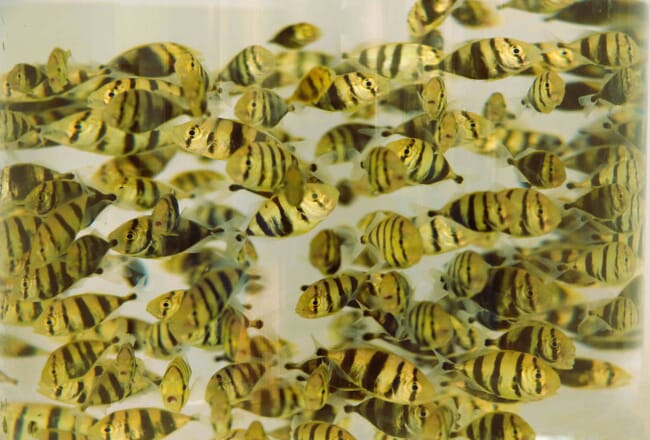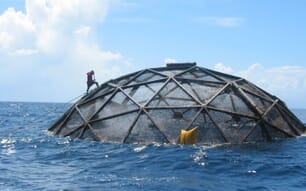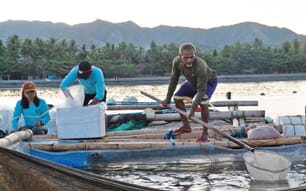
© ICAR-CMFRI
In a breakthrough development for the aquaculture industry, researchers from India’s Central Marine Fisheries Research Institute (CMFRI) have successfully developed seed production technology for golden trevally (Gnathanodon speciosus), a high value marine fish.
Golden trevally is a reef-associated fish, commonly living alongside larger animals such as skates, sharks, and groupers. The fish shows strong potential for aquaculture, boasting fast growth rates, high meat quality, and significant market demand for both consumption and ornamental purposes. The farm-gate value for golden trevally can be up to Rs. 500 per kg, whilst individual fish can be sold for up to Rs. 250 for ornamental purposes.
The researchers at CMFRI’s Visakhapatnam Regional Centre achieved successful captive breeding and larval rearing of the fish after five years of research, and it is hoped that this major development will open up a new avenue for seafood production, boosting India's aquaculture industry.
Additionally, the success of farming for the species could reduce harvest pressure currently exerted on wild stocks. Golden trevally landings reported by the Indian fisheries industry have been in significant decline over recent years, declining from 1106 tonnes in 2019 to 375 tonnes in 2023 - a 66 percent decrease in only 5 years.
“This is a significant milestone in Indian mariculture,” said Dr A Gopalakrishnan, director of the CMFRI, in a press announcement of the breakthrough.
“Golden trevally is an ideal candidate for sea farming due to its desirable qualities. Given the declining trend of its landings, the success in captive breeding of this fish has greater significance as it will offer opportunities for sustainable fish farming through mariculture practices including sea cage farming. The technology will also contribute to wild stock restoration efforts through the sea-ranching initiative,” he explained.




